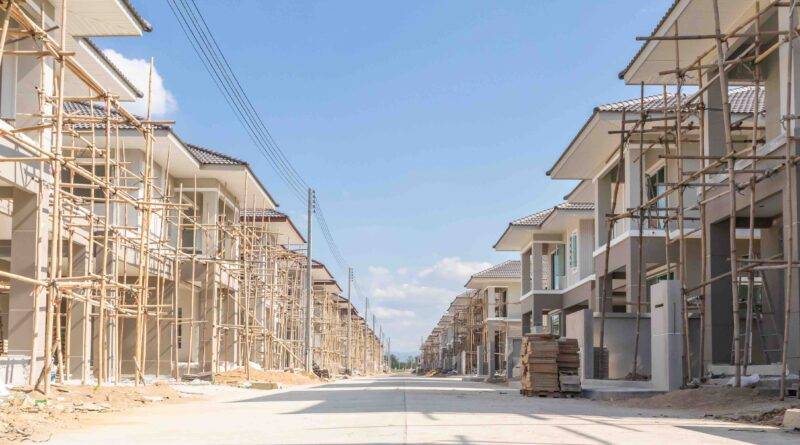2025 is The Rebound Year We’ve Been Waiting For
With a challenging year behind us, motivated buyers and appetitious builders might finally benefit from the market ahead
By Scott Menard
As we come together for another year at IBS and look to what lies ahead, now is a great time to reflect on the market shifts and hurdles of the past 12 months and share predictions for the next 12. Spoiler alert: it was a year of considerable challenges for both land acquisition and home sales.
In 2024, top national homebuilders increased market share due to the availability of lower-cost capital. Regional private builders, on the other hand, found growth to be challenging, mainly due to capital constraints from lack of availability via private capital markets.
Persistently high mortgage rates kept home sales sluggish at different times throughout the year – especially during the second half of 2024, an unusually slow period that was likely influenced by the election and the anticipated lowering of the Fed rate. Unsurprisingly, sales picked up when rates dropped to around 6% but slowed again when they rose to the upper 6% to 7% range.
In addition to these ongoing fluctuations, broader economic and geopolitical challenges caused even more uncertainty for homebuyers. We saw significant layoffs in the tech industry in the first half of the year, coupled with inflation concerns and ongoing wars, all of which contributed to a wait-and-see approach for many potential buyers. Overall, people were less compelled to buy a home in 2024 unless they had to, whether it was for a job relocation or some other pressing need. Stagnant home sales also suppressed land acquisitions – though builders have acknowledged the need for more lots to fuel future demand, stressing the importance of planning ahead. Despite all these barriers, there was a noticeable sense of optimism that the market would be in a better position following the election.
As we distill our learnings from 2024 and forge ahead into this new year, the most important takeaway for 2025 is to prioritize being prepared for an all-new market.”
But last year’s challenges aren’t expected to magically disappear in 2025; at least not right away. So, what can we really expect? While it’s hard to predict, it could be a rebound year for housing. Inflation will likely remain a challenge, though mortgage rates are expected to drop throughout 2025, which could offer relief to both homebuyers and homebuilders. With the election behind us, there seems to be a general uptick in consumer confidence, which could help revitalize and strengthen the market. (On the flip side, if President Trump enacts tariffs, inflation may rise, leading to higher new home costs and yet another cooling effect on housing.) Tech layoffs appear to be in the rearview mirror for now, suggesting a more stable job market for 2025. And we all remain hopeful that the ongoing wars will soon come to an end, which could result in a more solid global environment that is better poised for housing market growth.
Home sales should start to ramp up in the spring – if mortgage rates begin to fall as anticipated. Concurrently, we’ll start to see builders increasing their land-buying appetites, triggering more acquisitions and increasing their market share throughout the year to overcome the currently insufficient supply. The resale market will continue to be tempered by homeowners who remain firmly anchored to their low-interest-rate homes. And let’s not forget about the Millennials – a ripe segment of eager buyers who have been patiently waiting on sidelines and are ready to jump into the market once they have the confidence that mortgage rates have truly peaked.
From a regional perspective, premium-priced markets will come back strong once rates begin to fall – areas like California, New York, Washington and Maryland. And as more companies require return to work/office, housing demand will begin to return to urban cores and suburbs that support major employment centers. Regions that previously benefitted from employees with work-from-home positions will continue to see a correction as more people shift gears and decide to move closer to jobs or family.
Speaking for The True Life Companies (TTLC) and Homes Built For America (HBFA), we’re excited and optimistic about the year ahead. We have an aggressive growth plan focused on high-demand, supply-constrained regions with strong job markets. TTLC plans to double its land acquisition pursuits across the country to supply lots to the nation’s largest homebuilders – many of which are currently running low on land inventory. For HBFA, we’re continuing a robust expansion in the San Francisco Bay area, with plans to include new regions the following year.
As we distill our learnings from 2024 and forge ahead into a new year, the most important takeaway for 2025 is to prioritize being prepared for an all-new market. As mortgage rates finally begin their descent, buyers will be more motivated, which means builders need to be more aggressive in their acquisition pursuits to meet demand in 2025 and beyond.
Scott Menard is Executive Vice President of The True Life Companies, and President and COO of Homes Built For America. He also serves as CEO of the firm’s general contracting company Brighton-Coulson. Headquartered in San Ramon, California, Homes Built For America (HBFA) is the homebuilding division of The True Life Companies. For more information on HBFA’s current and past portfolio of properties, visit www.homesbuiltforamerica.com or www.facebook.com/homesbuiltforamerica.


